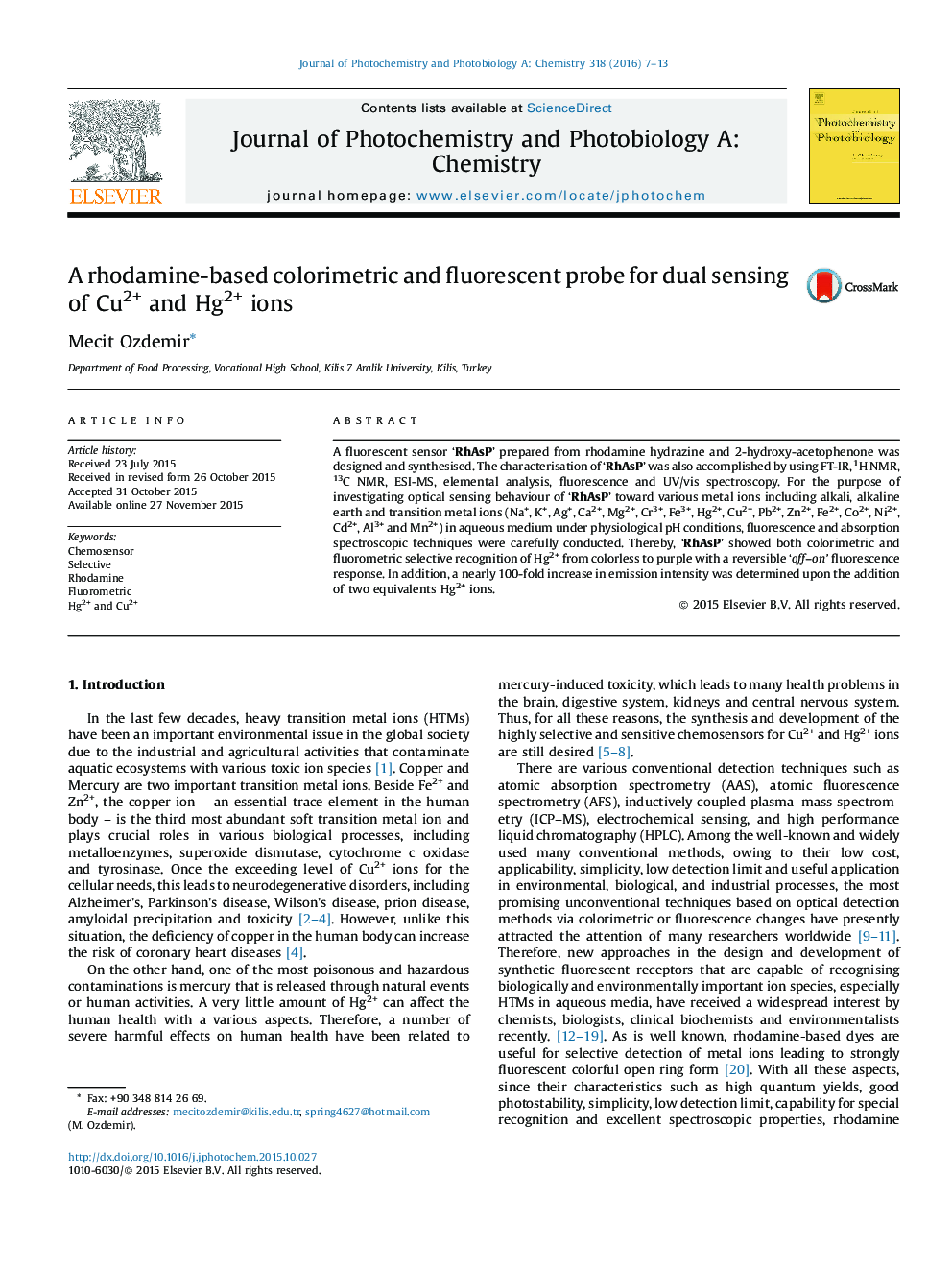| Article ID | Journal | Published Year | Pages | File Type |
|---|---|---|---|---|
| 26206 | Journal of Photochemistry and Photobiology A: Chemistry | 2016 | 7 Pages |
•Synthesis and characterization of ‘RhAsP’.•The spectroscopic studies were carried out for investigating the selectivity of ‘RhAsP’ toward Hg2+.•Addition of mercury ion into ethanol–water solution of sensor caused a strong fluorescent emission at 586 nm.•The limit of detection was found to be 150 nM for Hg2+.
A fluorescent sensor ‘RhAsP’ prepared from rhodamine hydrazine and 2-hydroxy-acetophenone was designed and synthesised. The characterisation of ‘RhAsP’ was also accomplished by using FT-IR, 1H NMR, 13C NMR, ESI-MS, elemental analysis, fluorescence and UV/vis spectroscopy. For the purpose of investigating optical sensing behaviour of ‘RhAsP’ toward various metal ions including alkali, alkaline earth and transition metal ions (Na+, K+, Ag+, Ca2+, Mg2+, Cr3+, Fe3+, Hg2+, Cu2+, Pb2+, Zn2+, Fe2+, Co2+, Ni2+, Cd2+, Al3+ and Mn2+) in aqueous medium under physiological pH conditions, fluorescence and absorption spectroscopic techniques were carefully conducted. Thereby, ‘RhAsP’ showed both colorimetric and fluorometric selective recognition of Hg2+ from colorless to purple with a reversible ‘off–on’ fluorescence response. In addition, a nearly 100-fold increase in emission intensity was determined upon the addition of two equivalents Hg2+ ions.
Graphical abstractA highly selective and sensitive ‘off–on’ fluorescent sensor RhAsP based on rhodamine derivative for the detection of Hg2+ and Cu2+ in aqueous medium.Figure optionsDownload full-size imageDownload as PowerPoint slide
